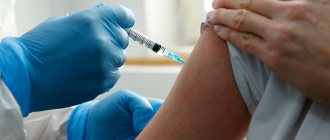Today, more than 380 million people have been diagnosed with diabetes, more than 10.9 million of them live in Russia. It is not always possible to diagnose on time; in 46% of cases the disease remains unrecognized. Self-monitoring is essential for optimal blood sugar control. The results help calculate insulin doses, the amount of sugar in food and physical activity.
The purpose of using a glucometer is not just to control blood sugar levels, but to reduce the incidence of late complications such as damage to the retina, kidneys and nervous system. No less dangerous is the risk of hypoglycemia associated with taking tablets and injectable forms of insulin. This contributes to a high risk of pathology of the heart and blood vessels. Before you buy a glucometer, let's talk about what is important in its use and what problems you may encounter along the way.
How to measure glucose levels?
To determine the concentration of sugar in the blood, you must:
- wash your hands thoroughly with soap and warm water and wipe dry;
- insert the test strip into the device and turn it on;
- pierce the pad of the middle, index or ring finger, after moving it to speed up blood circulation;
- wipe off the first drop with a cotton swab and apply the second onto the test strip;
- remove and discard the test strip;
- turn off the device.
The result will be known in 5-60 seconds (depending on the model).
To obtain accurate results, you must strictly follow the rules for using the glucometer:
- Before taking measurements, calibrate the device;
- After the puncture, lightly massage your finger without squeezing out the blood;
- Store test strips correctly, observing the expiration date;
- check that the numbers on the test strip packaging correspond to the code on the screen;
- clean the device in a timely manner;
- Change lancets after each blood draw.
Every diabetic should have an individual glucometer. You should not use someone else's device.
How to measure blood sugar correctly
Before getting interested in how to measure blood sugar levels, let's figure out what actually happens in the blood of a diabetic.
The development of diabetes mellitus is based on a lack of insulin, which is needed to utilize glucose in the blood. With age, the release of insulin from the islet cells of the pancreas decreases and at the same time the effectiveness of insulin in the body's cells (for example, muscle cells) decreases. Accordingly, the amount of sugar - or more precisely - glucose in the body increases.
So, let's learn to say "glucose" and not "sugar" Why? Yes, because there are a lot of sugars in the blood - sucrose, lactose, maltose, and glucose.
When we say: “how to correctly measure blood sugar with a glucometer,” we must understand “how to correctly measure blood glucose with a glucometer.” The value of a glucometer depends on whether it reacts to “other sugars” other than glucose itself. If it does, it’s bad! He will simply overestimate your results. So let's learn to say "glucose" instead of "sugar" and "plasma" instead of "blood."
By the way, look at how this is written down in the analysis results:
Glucose!
But in the “non-Russian” language - Glikoze plazma
But look at how most glucometers are calibrated in international studies for compliance with ISO-15197-2013 - BY PLASMA! Because if they are calibrated using “whole blood”, then the indicators will be 1.2 less - REMEMBER THIS!
How to correctly measure blood sugar with a glucometer, or more precisely: How to correctly measure plasma glucose levels with a glucometer
Correctly measuring blood glucose with a glucometer is quite simple: any glucometer is accompanied by instructions - both text and pictures, which can easily explain the sequence of actions. For example this one:
The question should be posed not “how to measure sugar with a glucometer,” but like this: “what mistakes do users most often make when measuring glucose with a glucometer?”
And there are not many of these errors.
1) Poorly dried finger, wiped with alcohol
2) A very small puncture is made and, not wanting to repeat the puncture, the user presses with all his might on the finger, as if pushing blood to the puncture site. In this case, we will not get capillary blood, but a mixture of blood with fat and lymph: the result will be unpredictable.
3) Hands were not properly warmed before the puncture. If you have cold fingers, do not hit your hands, do not rub them furiously and do not put them in boiling water - this will lead to the rupture of small capillaries and the same mixture of blood, fat and lymph. Gently warm your palms in lukewarm water. Or just stay warm!
4) Expired test strips are used - no comment!
5) The number of the test strips does not match the number installed on the glucometer itself - i.e. The glucometer has not been set up. Modern glucometers do not require manual adjustment - keep an eye on advances in this area and don’t be afraid to change your glucometer more often; promotions for exchanging old glucometers for new ones are ongoing!
How to measure blood sugar without a glucometer, or more correctly: How to measure blood glucose levels without a glucometer
If someone wants to know the truth - without a laboratory blood test or a glucometer - well, no way!
Many smart and honest minds are thinking about how to measure blood sugar levels at home without a glucometer, that is, NON-INVASIVELY They come up with devices for non-invasive measurement of blood sugar - by the magnitude of the current, by the ratio of upper and lower pressure - however, none of these methods are licensed, since they do not meet general standards for the accuracy of readings and depend on many individual characteristics of the user. So, to the specific question: “how to correctly measure blood sugar levels,” we must answer only this way:
“Glucose measurements are carried out both on an empty stomach and 2 hours after a meal using an ISO 15197:2013* certified glucometer and corresponding test strips.
For a healthy person, fasting readings should not exceed 6.1 mmol/liter, and readings 2 hours after eating (glucose tolerance) should be less than 7.8 mmol/liter.
For a diabetic patient, the attending physician sets the desired limits for indicators, for example:
On an empty stomach - less than 10 mmol/liter, and 2 hours after eating - less than 14 mmol/liter.
And the patient, with the help of the recommended diet, lifestyle and medications, strives to achieve these indicators and improve them!”
* New standard ISO 15197:2013 “In vitro diagnostic systems. Requirements for blood glucose monitoring systems for self-monitoring in the treatment of diabetes mellitus" differs from the previous 2003 version in the following aspects:
More accurate glucose measurements will allow patients to better manage their diabetes through informed treatment decisions, which may include diet and medication dosage, especially insulin. |
Measurement frequency
It is recommended to measure sugar concentration:
- in the morning after waking up, without getting out of bed;
- before eating;
- 1-2 hours after eating;
- before, during and after physical activity;
- 5 hours after insulin administration;
- before driving a car;
- before bedtime.
If there is a high probability of hypoglycemic risk, it is advisable to additionally take a control measurement at 3-4 am.
In some cases, more frequent monitoring may be required:
- for hypoglycemia and hyperglycemia;
- when changing the dosage of the medicine;
- at the beginning of taking a new drug;
- when introducing new products into the diet;
- when you feel unwell.
For type 1 diabetes, it is necessary to take measurements several times daily, and for type 2 diabetes, it is enough to measure glucose levels 4-7 times a week and do daily monitoring once every 7-10 days.
All readings received should be recorded in the Self-Control Diary and taken with you before visiting your doctor.
Content:
- What is a glucometer and how it works?
- How to properly set up a glucometer?
- How to use a glucometer correctly?
- Short description
Any disorders of carbohydrate metabolism, including diabetes mellitus type 1 or 2, require monitoring of blood glucose levels. For this purpose, a glucometer is used. How to use the strips and the device itself, and calibrate it to obtain reliable results is indicated in the instructions. In general, most devices have similarities in the principle of glucose determination and use.
Why measure your sugar level?
Self-monitoring of glucose will allow you to:
- determine the effectiveness of medications at night, after meals and between meals;
- calculate the optimal dose of insulin and dosage of medications;
- adjust nutrition and physical activity;
- assess the dynamics of the disease;
- ensure driving safety;
- prevent the development of diabetic crisis, hypoglycemia and hyperglycemia.
It should be noted that self-monitoring cannot replace laboratory diagnostics. Therefore, you should visit the clinic every month for a blood test.
Which glucometer is the best?
For a doctor, accuracy is important in a glucometer; for a patient, convenience and ease of use are important.
Accuracy. The accuracy of the instrument is important. International accuracy standards have been adopted for a glucometer for home use. According to ISO 15197, the error compared to the laboratory should be within 20%. This means that by taking 2 different glucometers and measuring blood with them simultaneously, you can get results that differ by up to 40%. There is no need to be scared, it is better to choose one device and use it constantly, this will give a real picture of your sugar level over time and will help you and your doctor.
Convenience. The device should be as gentle and comfortable as possible. A device with capillary blood sampling is considered more convenient. After the puncture, you dip the edge of the test strip into a drop of blood and it itself absorbs the required amount. There are devices where you need to drop a drop of blood into a special field on the test strip; this is more difficult to do, especially for an elderly person.
The display should be bright, with large font so that the readings are easy to read. It is advisable to choose a device where you do not need to enter the coding for calibration manually. This reduces the likelihood of measurement errors.
Younger users can choose glucometers that transmit readings via Bluetooth and have various software and applications. If the user is elderly and writes down data in a notebook the old-fashioned way, these functions can also be useful, but for control by relatives and the attending physician.
There are glucometers that transmit readings via Bluetooth and have various software and applications.
One of the most painful topics is the price of test strips. This is what you need to focus on when choosing a glucometer, among other characteristics. The average price category provides good quality measurements, the main thing is to take them regularly.
Also, when traveling abroad, you need to have a supply of test strips, since the models of glucometers may differ in different countries and strips purchased abroad may not fit your device.
Therefore, it is impossible to say unequivocally which device is better. It is necessary to know who will use it and under what conditions. Based on this price-quality ratio, make a choice.
What else can glucometers do?
Measurement on one device, from left to right: uric acid, cholesterol, glucose.
In addition to standard blood sugar measurement, these machines can:
- create profiles and save information about multiple people;
- There is a glucometer for measuring cholesterol and sugar, this is useful for people who need to regularly monitor both indicators;
- ability to measure uric acid levels in the blood;
- some models are capable of measuring a person’s blood pressure;
- models may differ in size and cost, for some people this may be the determining factor when choosing a device;
- At the moment, there are devices that operate without the use of test strips; a different system of contact between the device and the analyzed material is used.
The most important thing that a person purchasing this device needs is how to properly use and maintain the glucometer. This measuring equipment performs an important function - it signals the patient when it is necessary to take measures to reduce sugar levels.
Therefore, the glucometer must be accurate and in good working order. For each model, the instructions describe specific methods for cleaning and checking serviceability.
Results
Checking your glycemic level at home using a glucometer is an integral part of the life of a patient with diabetes. Thanks to this, a diabetic can control his condition, correctly calculate the dose of medication, and take timely measures to prevent critical risks.
The measurement results must be saved to a computer (or recorded) in the “Diabetes Diary”. Analysis of the patient’s records will help the doctor analyze the dynamics and predict the course of endocrine pathology, and, if necessary, adjust treatment tactics.
Against the background of independent measurements, one should not forget about regular visits to the endocrinologist and donating blood in the laboratory. The accuracy of laboratory diagnostics is always higher than that of portable glucometers.
Who needs a glucose tolerance test?
If hyperglycemia is suspected, the doctor prescribes repeat tests. These are tests with a sugar load, allowing you to understand how ready the body is to cope with a one-time supply of glucose in large quantities. This is how the pancreas functions and its ability to produce insulin in large volumes is tested. Tests are carried out after consuming 75 g of glucose dissolved in water. Then the indicators are measured four more times with an interval of half an hour.
During pregnancy, this test is used to diagnose gestational diabetes. A glucose tolerance test is mandatory for all pregnant women at 24-28 weeks. For pregnant women in the risk category (history of gestational diabetes, body mass index more than 30), the test is performed earlier than these dates. It includes two stages of research, which are carried out on an empty stomach and after consuming glucose.
About glucometers
The device for measuring blood glucose levels is a portable device equipped with a display and functional buttons. According to the technical characteristics, the following glucometers are used today:
- photometric – indicators are assessed by changes in the color indicator;
- electrochemical - according to current strength;
- non-invasive devices, i.e. without punctures of the skin (thermal, spectral, ultrasound, tonometric).
The latest version of glucometers allows you to avoid permanent injury to the skin and accidental infection of the puncture wound. The disadvantage of this type of device is the high price category. In addition, not all non-invasive models are certified in the Russian Federation. The most common assistant for Russian diabetics is an electrochemical glucometer.
The prerogative aspects of the device include:
Tests for diabetes
- price;
- accuracy (minimum error of results);
- ease of operation;
- high speed of obtaining results;
- auto-encoding of strips (test strips);
- “blood drop” function (0.3 µl is enough to check sugar levels);
- memory function (you can save the results of previous measurements);
- customization function;
- availability of consumables (strips).
Depending on the specific model, the meter may be equipped with additional capabilities for measuring ketone bodies and cholesterol. Popular among diabetics are the functions of calculating the average glycemic value per day (week, month), and automatic connection with a home computer.
Devices differ from each other in color, shape, font size (numbers displayed on the display). Among domestic models, the Satellite Express glucometer (manufactured by Elta, Russia) is considered the leader. The device is distinguished by high accuracy of results and an affordable cost. Equipped with functions:
- auto-on;
- memory;
- uninterrupted use more than 2 thousand times.
Another plus is the Russian-language menu.
The range of possible values for which the device is oriented is 1.8 - 35 mmol/l
The most popular imported devices are glucometers of the AccuChek line (Accu-Chek), manufactured in Switzerland:
- Mobile;
- Assets;
- Performa.
The price of foreign devices is an order of magnitude higher than domestic ones.
Don't forget about memory!
The expert considers the memory of a glucometer to be one of the important parameters: “It is important that the device remembers the result, date and time of the analysis. For example. Our Satellite Express stores up to 60 of the latest results. For the attending physician, and the diabetic himself, it is very important to be able to perform a statistical analysis of measurements, as well as systematize data for further monitoring of indicators. This makes it possible to predict events to some extent and make important decisions related to treatment adjustments.”
Everyone has
Despite the fact that all glucometers perform the same task and their functions are similar, each manufacturer still tries to bring something of its own to the device. And when choosing a device, you should pay attention to this.
All test strips are individually packaged, so they have a long shelf life over a wide temperature range, guaranteeing sterility and, therefore, accurate readings.
Medtechservice specialists will also highlight the accuracy of their strips, but at the expense of other indicators. “The blood monitoring system should not respond to various interfering substances contained in the blood. - Vladimir Zhuvak says. – The fact is that they can be perceived by the device as glucose, and because of this, the measurement result will be falsely high. Our “trick” is that with our test strips, interfering substances have virtually no effect on the final measurement result. The secret lies in the enzyme used. Test strips are stored in a special tube, the lid of which consists of a combination of absorbent substances that provide the required storage conditions.”
Do I need to code my glucometer?
A thin layer of special reagents is applied to the surface of the test strip, with which the glucometer determines blood glucose, which has certain differences in different batches of test strips. To avoid the measurement errors associated with this, coding is used that “smooths out” the differences. Therefore, it is necessary to code the glucometer. However, modern glucometers use “No coding” technology (for example, “Contour TS”, “Contour Plus”, “Contour Plus One” glucometers). This does not mean that coding does not occur, just that the corrective “code” is written on each test strip and when it is inserted into the glucometer, it is read. As a result, the device is encoded “itself”, without the need to insert special “chips” into it or enter numbers manually. Devices using No Coding technology ensure ease of use and the absence of errors that may be associated with the coding process.
Glucometers
Contour TS Germany
| Advantages of the device: | Flaws |
| Encoded automatically The result is visible in 8 seconds. Device memory for 250 measurements. A sound signal will notify you that the analysis is complete. Shutdown after 3 minutes. Calibration is carried out using whole blood (taken from a finger) | Need for calibration |
Accu-Chek Active USA
| Advantages of the device: | Flaws |
| Blood quantity 0.2 µl Analysis time – 5 s Analysis reminder function after meals. Memory for 350 measurements. The time and date of the analysis are indicated. Encoded automatically. Warnings about test strips being unusable if they are past their expiration date. The device's battery is designed for 1000 analyses. Liquid crystal display Large symbols | sometimes you have to reuse a new strip. |
One Touch Select USA
| Advantages of the device: | Flaws |
| Analysis time 5 seconds When the glucose level is high or low, it gives a signal Large memory capacity of the device – for 350 results Calculation of average sugar levels for a week, 2 weeks and a month Blood plasma calibration (results will be 12% higher than whole blood calibration) A single code is used to encode a new package of test strips. The code changes if it is different on the new packaging Large symbols | Test strips are quite expensive |
Accu-Chek Performa Nano Roche
| advantages | flaws |
| Compact, device weight 40 g The blood volume for measuring glucose is controlled by the device. Blood volume is small about 0.5 µl Time measured 5 s will signal if the test strip has expired Memory for 500 measurements Ability to calculate average results for 7, 14, 30 and 90 days “alarm clock” reminds you of analysis time Universal coding Hypoglycemia indicator | Consumables for the test are quite expensive |
Accu-Chek Mobile Roche
| advantages | flaws |
| no coding required, calibration is done using plasma. 11 puncture positions Analysis time 5 s memory for 2 thousand measurements with time and date alarm clock notifying you of the need to do a test two drums with lancets and a test cassette for 50 measurements | High price : test cassettes are more expensive than test strips |
Bioptik Technoloqy Easy Touch Taiwan
| advantages | flaws |
| not only sugar, but also cholesterol and hemoglobin works on the principle of coding time for glucose and hemoglobin – 6 seconds, for cholesterol – 2 minutes blood volume - 0.8 µl Memory capacity up to 200 measurements for sugar, 50 for hemoglobin and 50 for cholesterol Large LCD display, large font and symbols, backlighting Shockproof housing The kit includes 10 test strips for glucose, 5 for hemoglobin and 2 for cholesterol | High cost of test strips Inability to communicate with a computer to synchronize analysis data |










